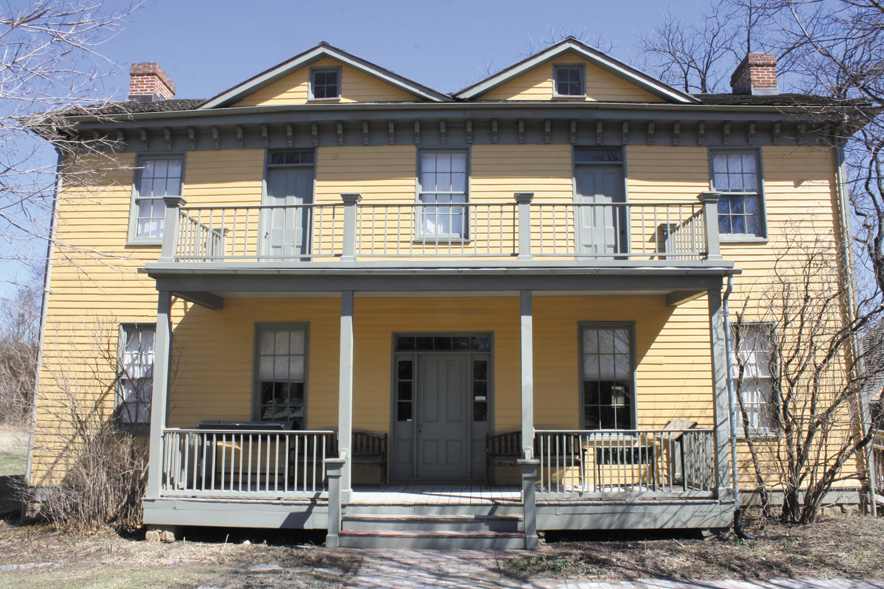Faust Park hums with activity on warm spring Saturdays. Children tumble on the playground and spill out of the carousel. Families marvel at the monarchs in the Butterfly House. But in the corner of the park, an entire town sits largely unnoticed, quiet and faded like a memory.
It’s the Historic Village, a motley assemblage of homes and outbuildings collected from across St. Louis County. By exploring the gardens of this composite neighborhood or surveying it from a front porch made of hand-hewn boards, visitors can envision what life was like before modern subdivisions replaced farms and forests.
Faust Park was created in 1968, when Leicester B. and Mary Faust donated nearly 100 acres of land once owned by Missouri’s second governor, Frederick Bates. Bates built the Thornhill estate on the property between 1817 and 1819. His home and outbuildings, placed on the National Register of Historic Places in 1974, were restored during the 1980s.
The Historic Village complements the Thornhill estate. The project itself was founded in 1986, but its homes are much older. “We were offered the Mertz cabin that was sitting on the property of Maryville University,” says James Foley, the cultural site manager for Faust Park. “We decided to start a village to preserve historic buildings from St. Louis County.” To be eligible for inclusion in the village, donated buildings must date to before 1910 and represent different architectural styles. They often come from property owners who are selling land to developers but who want to ensure historic structures are preserved. Some buildings are transported intact. Others are dismantled and rebuilt on site.
Each building tells the story of a family that contributed to the development of the region. The Mertz cabin was built by a couple from Alsace-Lorraine who raised six kids on their farm. German immigrant Henry Hoch, a brickmaker, constructed his home in 1880, while the Conway cottage belonged to Dr. Frederick Bates, a physician farmer. The Queen Anne carriage house, now the park’s office, was owned by Miles A. Seed, who invented the photographic dry plates that made photography more accessible in the 1880s.
Although their names are not well-known to most locals, these families’ small stories combined tell the narrative of 19th-century St. Louis. “It reminds all of us what St. Louis County used to be like, and it preserves vernacular architecture, which might entail everything from a simple log cabin like the Mertz home to a more affluent structure like the Conway house,” Foley says.
Two additional buildings are under construction. The first is a Spanish Lake blacksmith shop, whose brick forge will be rebuilt this year by retired St. Louis bricklayers. The second, a mercantile store from downtown Fenton, is scheduled to be completed by next summer.
by Rebecca Koenig
